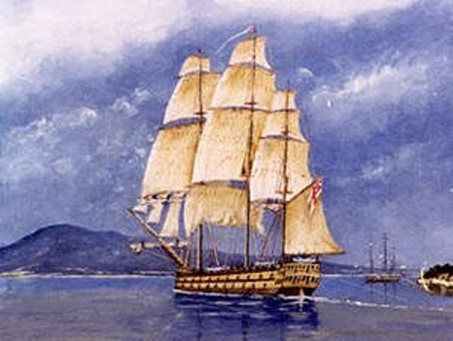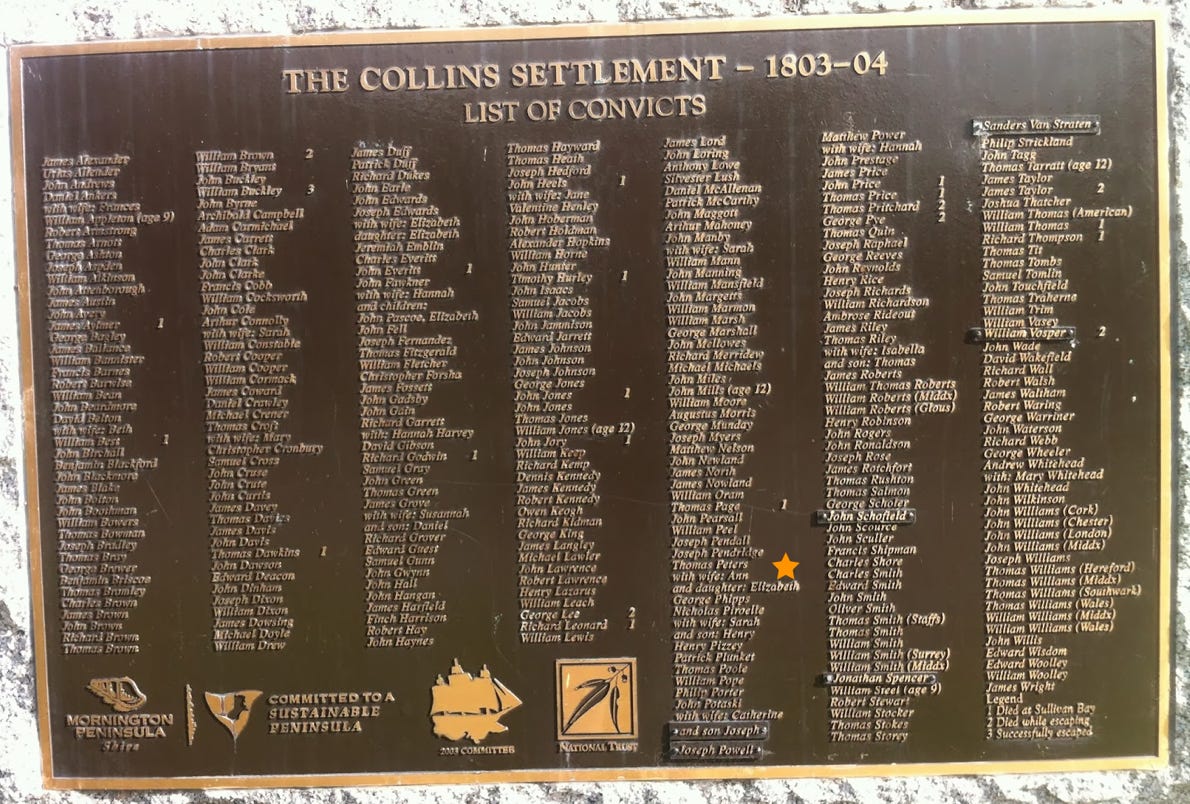The Calcutta 1803

…”Between May 1802 and February 1803, the Navy had Calcutta fitted out as a transport for convicts being sent to Britain's penal colonies in Australia. She received new armament in the form of sixteen 24 -pounder carronades on her upper deck and two six-pounder guns on the forecastle. Captain Daniel Woodriff recommissioned her in November 1802 and sailed her from Spithead on 28 April 1803, accompanied by Ocean, to establish a settlement at Port Phillip. Calcutta carried a crew of 150 and 307 male convicts, along with civil officers, marines, and some 30 wives and children of the convicts. The Reverend Robert Knopwood kept a journal on the voyage.” https://en.wikipedia.org/wiki/HMS_Calcutta_(1795)
…”H.M.S. Calcutta was a 1200 tonne, 52-gun warship. She was modified for this journey. The length of her main deck was 60 meters, her breadth was 10 meters, and her height was 61 meters to the top of her mast. She was built of teak in 1788 for the East Indian Company and originally named the 'Warley'. She carried 52 guns and was capable of 12 knots. On the voyage to Port Philip the Calcutta carried approximately 640 people. These included convicts, some with wives and families, 23 officers, a crew of 150 seamen, 59 marines attached to the H.M.S. Calcutta and another 50 marines, which were to be the colony's garrison.”

England & Wales, Crime, Prisons & Punishment 1770 - 1935
National Archives London via https://www.findmypast.com.au/
…”Most vessels were converted merchantmen, with partitioned quarters between decks to hold the convicts and heavy grilles and padlocks added for security. The living space was cramped, foetid and airless, and convicts slept in bunks rather than hammocks. The air quickly became foul with odours from the unwashed bodies and livestock on board. Melting pitch used to caulk ships could fall onto those imprisoned below deck.”
High Seas and High Teas: Voyaging to Australia, by Roslyn Russell, p.10.

Memorial to the first British Settlement in Victoria 1803 (northern side)
‘Thomas Peters with wife Ann and daughter Elizabeth ‘ (at the star)
See the entry for Thomas Peters, Mary Ann Peters (nee Hews), and their daughter Elizabeth Peters on this website:
Ships
SHIPS - our ancestors’ voyages to somewhere down south
The 1803 Calcutta voyage of Thomas Peters and Mary Ann Peters (nee Hews) & child
The 1804 Ocean voyage of Thomas Peters and Mary Ann Peters (nee Hews) & child
The 1825 Asia III voyage of William (Snr) Marks
The 1832 Royal Admiral voyage of William Holt
The 1833 Layton voyage of Ann Maria Lamb
The 1838 St George voyage of Alexander Fraser and Margaret Fraser (nee McBean) & children
The 1865 Hannah More voyage of Patrick Joseph Doyle and Maria Bridget Doyle (nee Hand) & children.

